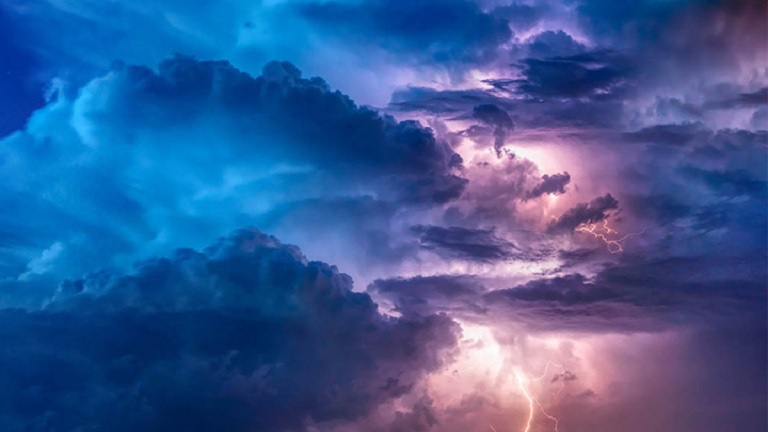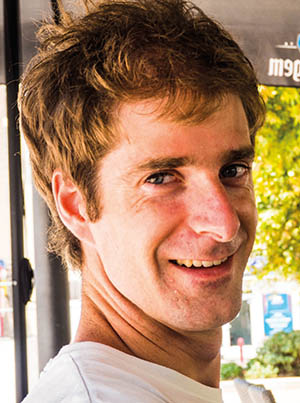Disaster Prevention and IoT: Weather or not?
More than a century ago, British writer Oscar Wilde asserted that “conversation about the weather is the last refuge of the unimaginative.” Today, though, there really is something to talk about. Hurricanes, storms, floods, and tornadoes, not to mention drought, wildfires, and other natural disasters, are, by some measures, becoming more frequent and certainly more costly, causing nearly a trillion dollars of economic losses annually in the United States alone. Fortunately, IoT innovators around the world are harnessing technology to make extreme conditions more predictable and to help people weather the weather better, as well as helping to manage other dangerous natural phenomena.
It can be somewhat sobering to realize that recording and measuring the weather is a relatively new activity, only begun in an organized way, fitfully, toward the end of the 19th century and then only conducted at scale and with rigor much more recently. A limiting factor was the cost of instruments and the complexity of gathering data from them, originally an entirely manual process. Now, through ubiquitous inexpensive sensors (as well as computers and sophisticated software and communications networks) a much more fine-grained view of the weather is emerging.
Climate and weather change call for unprecedented levels of accuracy.
Bill Gail, CEO of Global Weather Corporation
The results are said to be already improving human life and safety. In Liberty Lake, Washington State, Matthew Smith, senior director of grid management at Itron, a provider of technology for energy and water resource management, agrees. He says recent advances in technology, such as smart sensors and advanced analytics, can help communities better predict, prepare for, and respond to natural disasters. For example, a sensor on a utility pole can now detect in real time if a pole is down. Remotely detecting damage and outage severity this way can accelerate response times.
“Rather than sending crews out to ‘drive the lines’ to discover problems, cities or utility companies can use remotely connected devices and line and fault sensors to acquire much-needed intelligence and send repair crews with the equipment needed to restore service quickly,” says Smith.
Similarly, smart meters can aid in natural disaster mitigation. With smart meters, organizations know instantly when and where the power is out, thanks to built-in intelligence which can diagnose problems remotely and send an outage alert as soon as it happens. In Houston, when Hurricane Harvey made landfall in August 2017, more than 250,000 people in Texas lost power. “Equipped with smart grid technology prior to this disaster, CenterPoint Energy was able to recover and reconnect people to power quickly, avoiding an estimated 45 million outage minutes for its customers,” says Smith. In addition, distribution automation devices, such as smart grid switches, allowed the utility to quickly isolate problems and restore service to customers.
Instead of sending crews out, we use remote devices and built-in intelligence to send us alerts.
Matt Smith, Senior Director, Itron
Another area where many people are impacted by weather is when traveling. Bill Gail, cofounder and CEO of Global Weather Corporation (GWC), is working on how to deal with one of the weaknesses of smart, connected vehicles – the weather. He says climate and weather-related challenges are driving a need for unprecedented levels of accuracy. This challenge cannot be met with traditional weather-data resources – it requires innovations such as road-level precision data, and more, according to Gail.
Designed for the mobility industry, GWC’s RoadWX weather forecast provides new levels of detail to increase safety and provide critical decision support for navigation planning, autonomous vehicle availability, fleet management, and driver safety alerts. The forecast provided is based on machine learning, sensor data gathered from vehicles, Road Weather Information System (RWIS) sites, and other, more traditional, sources of weather information.
Another area where many people are impacted by weather is when traveling. Bill Gail, cofounder and CEO of Global Weather Corporation (GWC), is working on how to deal with one of the weaknesses of smart, connected vehicles – the weather. He says climate and weather-related challenges are driving a need for unprecedented levels of accuracy. This challenge cannot be met with traditional weather-data resources – it requires innovations such as road-level precision data, and more, according to Gail.
Designed for the mobility industry, GWC’s RoadWX weather forecast provides new levels of detail to increase safety and provide critical decision support for navigation planning, autonomous vehicle availability, fleet management, and driver safety alerts. The forecast provided is based on machine learning, sensor data gathered from vehicles, Road Weather Information System (RWIS) sites, and other, more traditional, sources of weather information.
Disaster Prevention and IoT: From Ice to Fire
It provides a forecast from the present time to up to 48 hours into the future. According to the company, the RoadWX forecast can now distinguish between five different kinds of road surface conditions – dry, near dry, wet, slush, and ice or snow, providing for optimal routing and better tuning of driving behavior to actual conditions. Weather can contribute to starting and sustaining wildfires and, here again, technologists are using sensor technology and “smarts” to stay ahead of the flames. As of late 2020, some 44,000 individual wildfires in the US had scorched nearly 7.7 million acres of land, one of the highest ever annual totals and mostly in western states.
Hi-res images and temperature sensors can be integrated into protective equipment.
Wouter Charle, Manager for hyperspectral imaging technology at Imec
An airborne network of information tools can also help. One such tool is drone technology, which is largely used to collect information about the location and magnitude of ongoing fires, to protect firefighters from potential dangers and alert the public to impending danger. Wouter Charle is team leader and manager for hyperspectral imaging technology at Imec, a research and innovation organization in nanoelectronics and digital technologies. According to Charle, the organization has built several “hyperspectral” technologies, designed to provide images in greater detail than traditional visible-spectrum camera systems and applicable to both forestry management and wildfire surveillance. Another wrinkle of the technology is added by putting similar camera technology and temperature sensors into the fire fighters’ protective equipment to allow supervisors and fire fighters to accurately assess the level of danger.
Our sensors can help to reduce fire risk in the western parts of the US.
Tim Barat, CEO at Gridware
Gridware is another IoT company that is building a network of sensors to try to reduce fire risk in the western US. Many of those fires have been traced to sparky interactions between animals or vegetation and the power transmission lines. Long stretches of power lines often run through areas that are hard to access and maintain – detecting a fire in these regions before it grows exponentially has always been difficult. One costly and unpopular solution has been to shut down power in areas considered to be at imminent risk of fire.
Improvement Needed
The solution that Gridware envisions is built on attaching an IoT guard on each utility pole which can then continually report on damage or equipment failures when they are still manageable, with very precise indication of exactly where the problem lies. Providing masses of data that can be monitored and analyzed is key to enabling preemptive corrections or rapid response and repairs to be made.

Test as You Go: Testing and validating new communication, data, and sensor technologies is a job for connected cars in the Smart Highway project.
“We are exfiltrating data with a combination of cellular, mesh, and satellite connectivity,” explains Gridware CEO Tim Barat. The company provides an end-to-end solution that provides decision makers with the critical information they need to manage their infrastructure. “We also expose APIs that plug raw or processed data directly into existing analytic systems,” he adds.
Water, Water Everywhere
Although wildfires are the primary destructive force at work in the western US, in other parts of the country and around the world, it is water – riverine flooding, tidal events, and so on.
Semtech, a supplier of analog and mixed-signal semiconductors and advanced algorithms, has worked with environmental technology firm Green Stream to create a system comprising LoRa (LongRange) devices and wireless radio frequency technology with Senet’s LoRaWAN-based network to connect flood sensor systems. The entire project is built around standard, low-cost components – the kind that are propelling IoT growth in these and other new applications. According to Jim Gray, CEO of Green Stream, “In many coastal towns and communities, rising water as a result of tides or rain can present a large threat.”

An Eye on the Sky: At Washington’s Liberty Lake, Itron monitors weather conditions and water resources through smart sensors and advanced analytics to better prepare for disaster.
Semtech says Green Stream’s flood monitoring uses ultrasonic sensors and LoRa-enabled gateways. Data moves over the LoRaWAN network, which can support on-demand build-out and management of IoT connectivity. The sensors are autonomous, solar-powered, wireless devices which don’t require external power, so they can be mounted on many kinds of infrastructure near bodies of water.
In coastal towns, rising water due to tides and rain present a large threat.
Jim Gray, CEO of Green Stream
IoT isn’t just about responding to disasters, it’s also about fine-tuning. For example, Schneider Electric, the French energy management and automation company, has connected more than 4,000 of its weather stations in disparate rural areas to its big data and IoT enabled WeatherSentry platform to create more precise forecasts. Using the technology, agricultural interests can prepare better than before for frost conditions or respond to excessive rain – or to droughts – that could impair crop production.
Further out on the leading edge, Google is building a worldwide earthquake alert system. If a user opts in, the accelerometer in their Android phone will become part of a network designed to detect earthquakes in real time. Taken together, this emerging world of outdoors IoT will give humans unprecedented insights and allow us to, if not control, at least exercise a much greater ability to work with Mother Nature.
READ MORE ARTICLES
silica content library/articles/disaster-prevention-and-iot-weather-or-not
Disaster Prevention and IoT: Weather or not? | Avnet Silica









